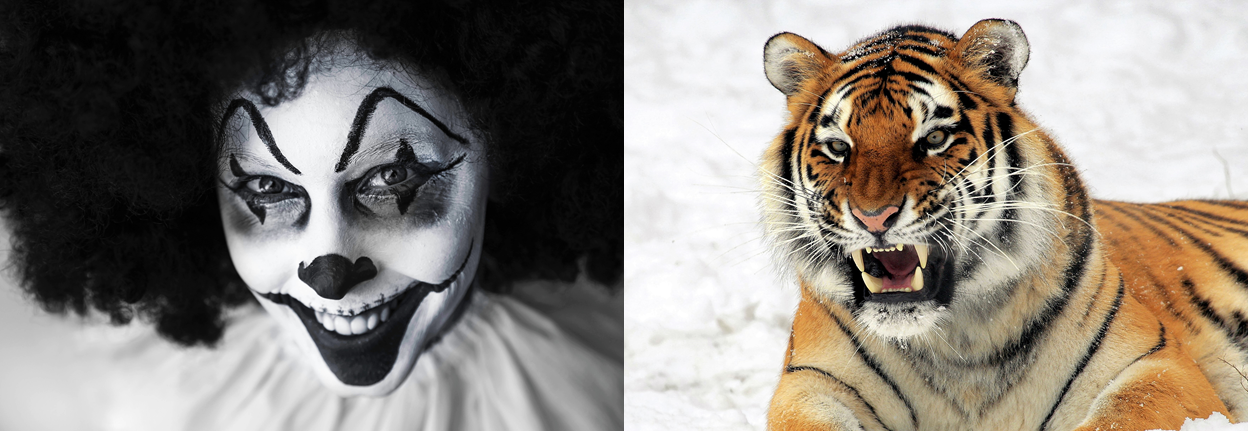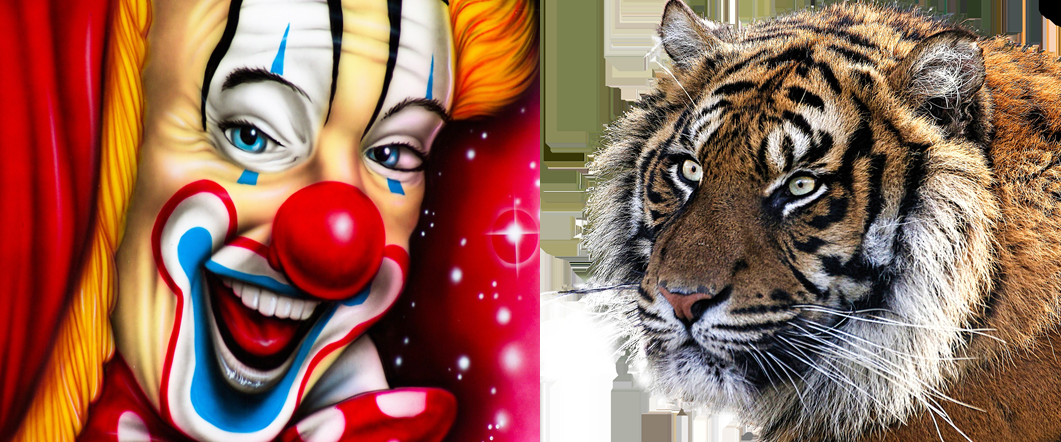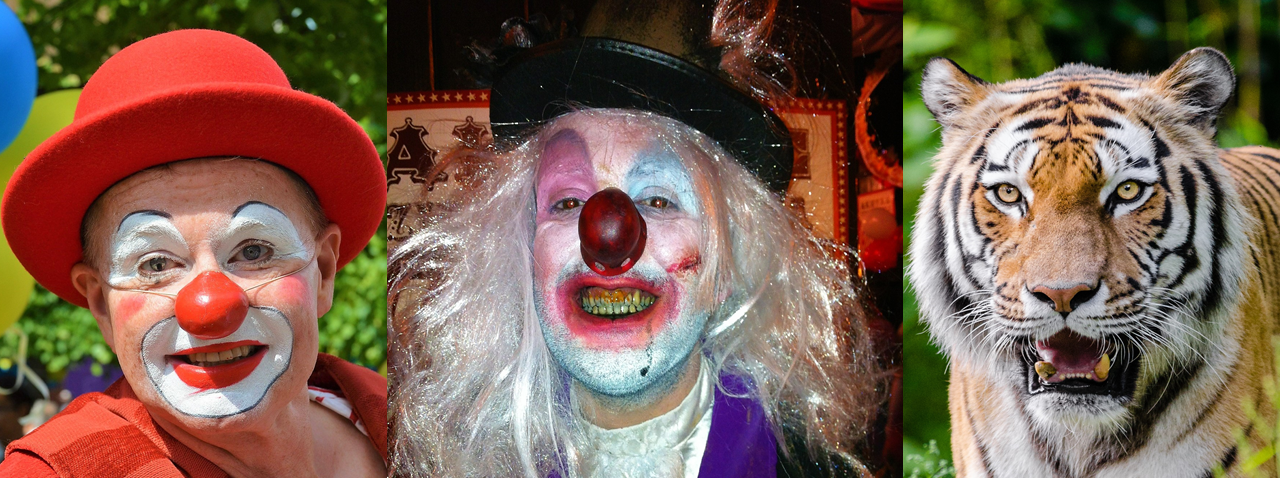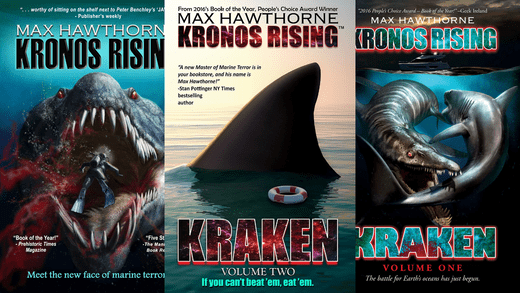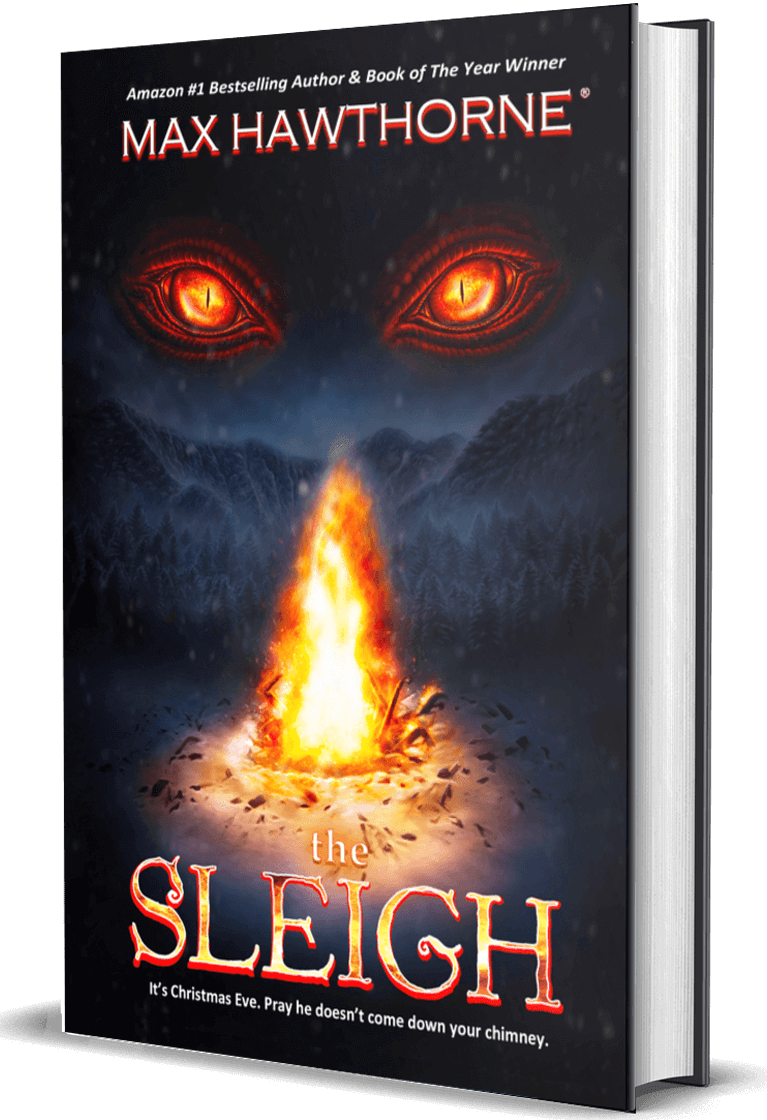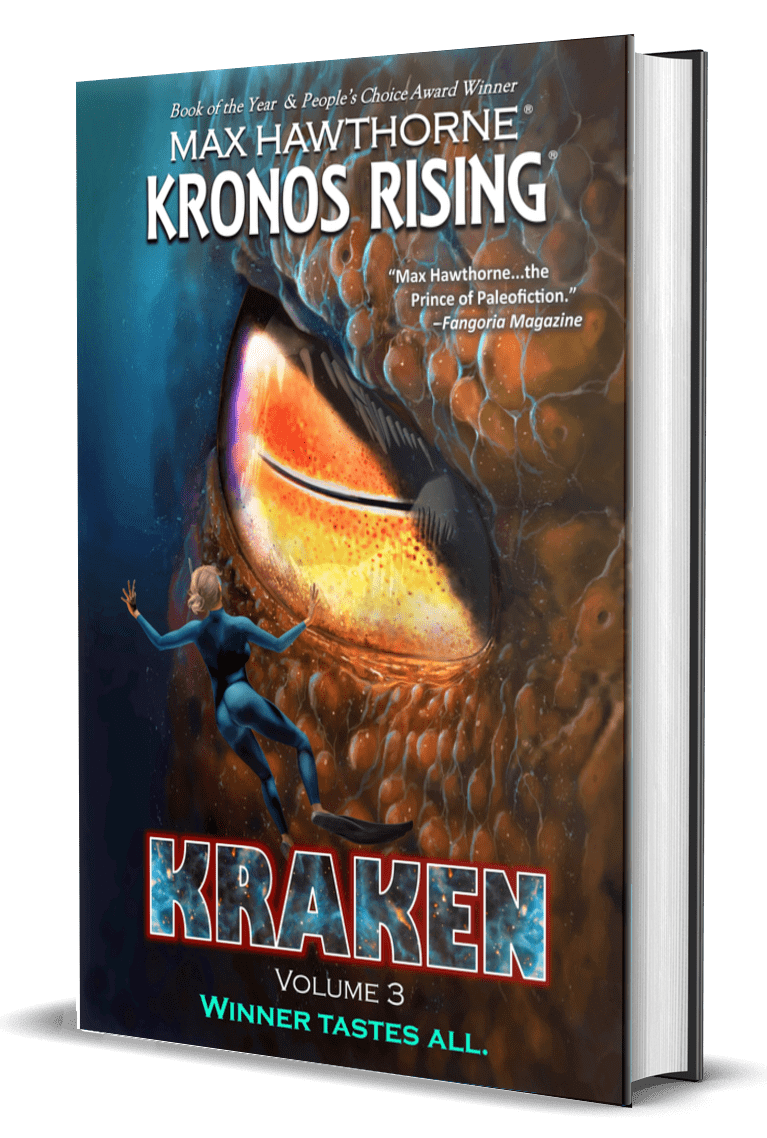One has but to sit through the first five minutes of the remake of Stephen King’s “IT” to know it’s scary as hell. I give the Master of the macabre an his film folk their due; King’s child-devouring clown Pennywise is a nightmare come to life. But, for a surprisingly percentage of people, clowns of any kind scare the poop out of them.
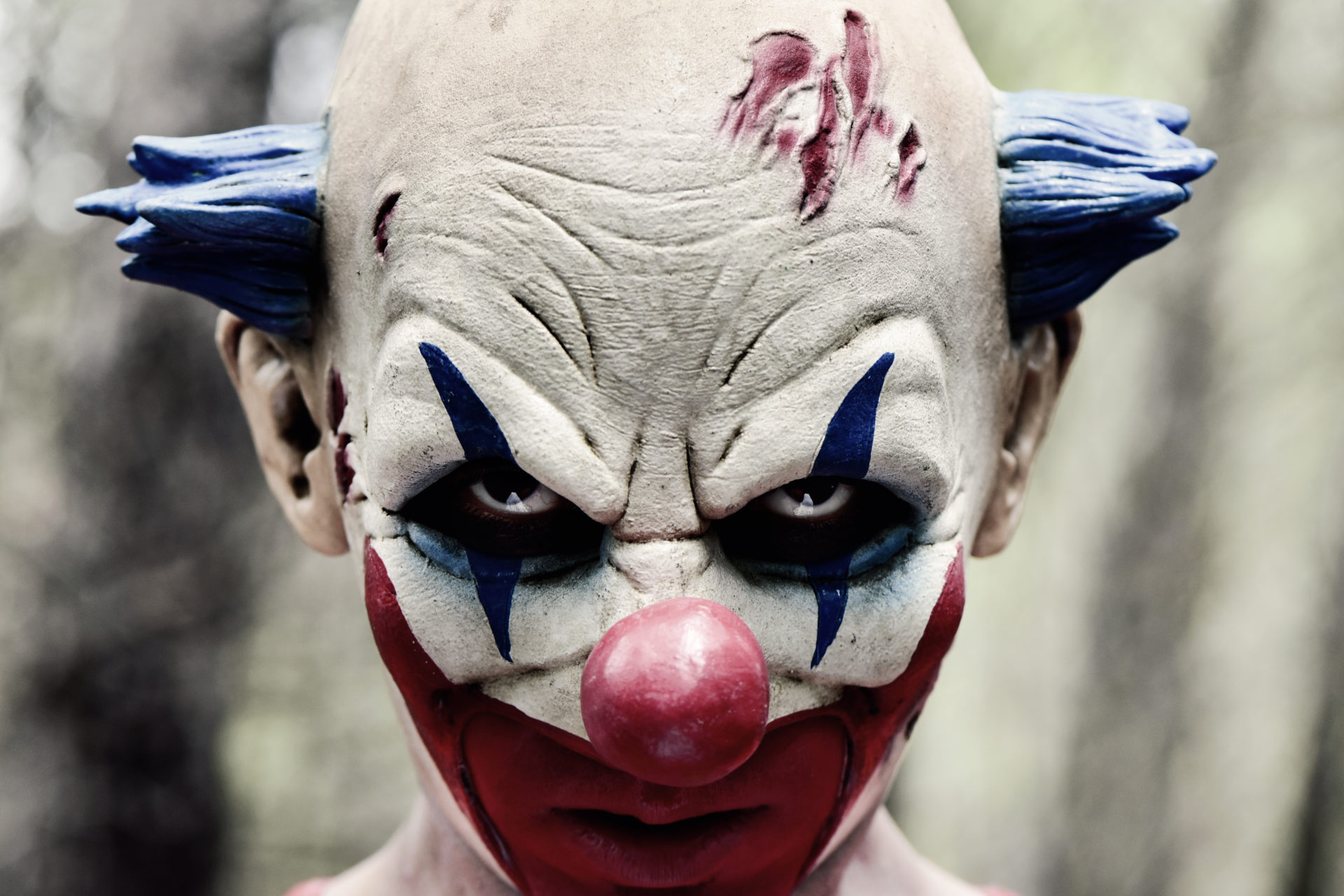
According to a recent survey by Rasmussen (Who Hates Clowns?) 43% of people stated they dislike clowns, and 12% suffer from coulrophobia, an active fear or dread of clowns. The question in my mind is why? Why is it not only that people are afraid of clowns, but that so many are affected?
At first glance, it seems hard to fathom. After all, what’s so scary about a clown? With the exception of the monstrous versions shown in horror films like It, they’re there to make us laugh. Their antics, painted smiles, and oversized feet, are all for our amusement. So, why all the fear?
Steve Scholzman, an assistant professor of psychiatry at Harvard Medical School believes it’s all about pattern recognition. In a recent article with People Why Do People Fear Clowns?, he opined that, although at first glance a clown may look like a person, its frozen facial expression tell us that something’s off. Scholzman stated: “Like most monsters, it’s a recognizable shape that’s tweaked. The perpetual smile is by itself is a different type of pattern recognition because we look at people’s expressions to get a sense of what to feel upon seeing them. But a clown doesn’t do anything but smile, so you don’t really know what it’s thinking or feeling. And all of those things are playing on pattern recognition.”
I think Dr. Scholzman is brilliant, but in this case I believe he’s missed the mark. Mind you, I’m no psychiatrist (admittedly, some say I should see one), just a novelist who writes paleo-fiction books, but I’m observant and tend to take a common-sense approach to things. I don’t believe coulrophobia is a matter of pattern recognition. I think that, when people see a clown, it registers with our subconscious. But it’s not a matter of being unrecognizable. Rather, it’s something we do recognize: something dangerous that generates an instinctive dread – one that has been engrained in our collective subconscious for hundreds of thousands of years.
The fear of big cats.
Whatever continent our earliest ancestors came from, big cats were their most feared predator, and continued to be for untold millennia. Worst of all, they were the ones we never saw coming. Panthers, tigers, sabretooth cats, lions . . . they moved like ninja, and struck from out of nowhere. There was no roaring challenge from these stealthy creatures, like a cave bear might utter, and no telltale howls like a hunting pack of wolves would generate. They were the assassins, the lurkers in the dark. They stalked us day and night, attracted to our smells, our sounds, even our campfires, and with their stealth, speed, and power, there was little defense against them. One can’t help but wonder; over tens of thousands of years, how many Homo sapien infants, children, or adults for that matter, were snatched from their caves, huts, or tents, and dragged screaming into the night, to be devoured by an inhuman monster?
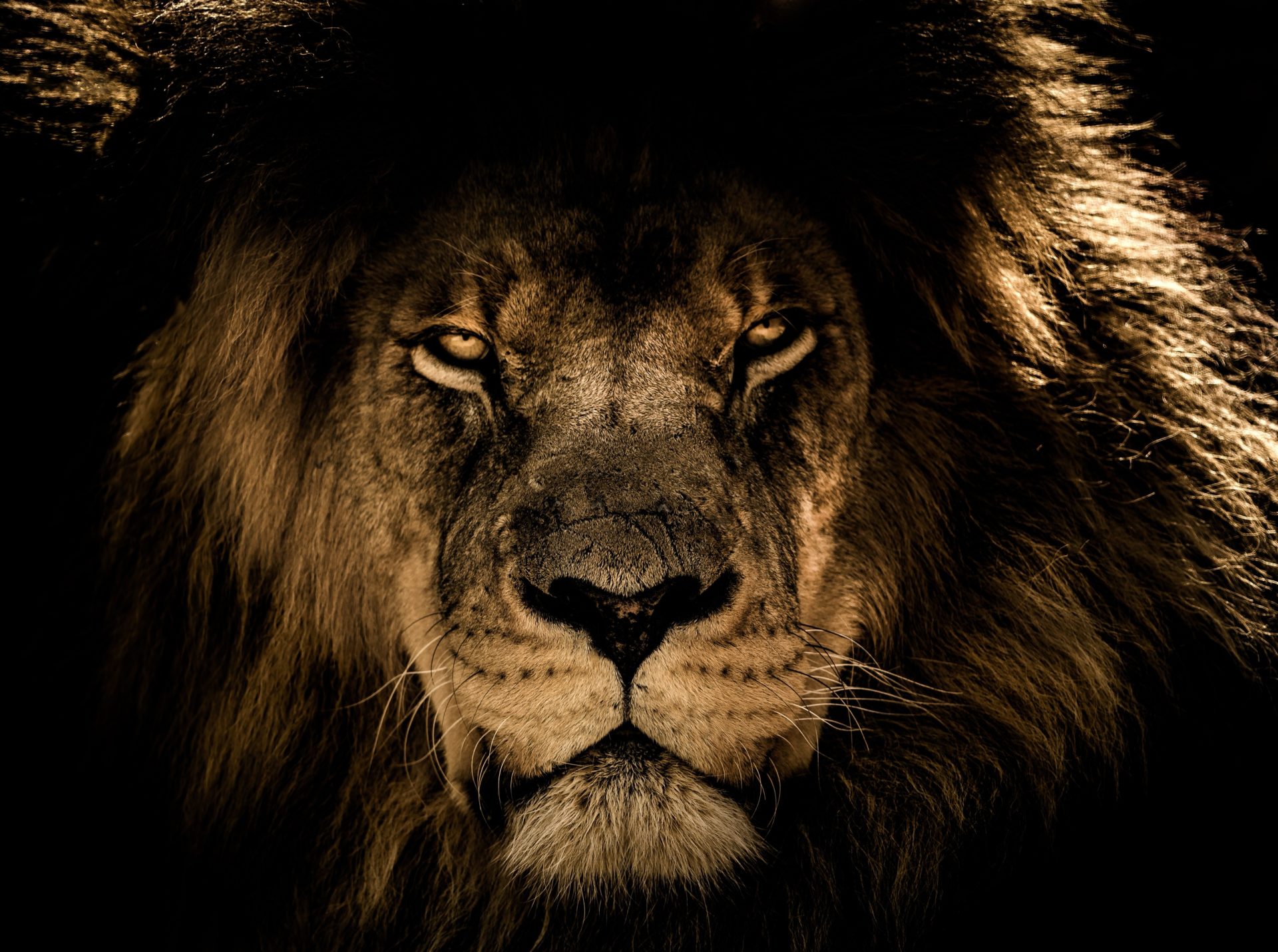
Fear of big cats is ingrained; it’s part of our genetic makeup. In fact, it’s one of the few instincts we still carry. I know, because I got a whiff of it firsthand at the Bronx Zoo. I was visiting there, when a male lion suddenly began roaring in the distance. Mind you, I’m not talking the kind of roar you see on most documentaries, where they’re fighting for territory or appropriating a meal. I mean the one big males make while they’re patrolling their turf, that thunderous bellow that travels for miles and shakes the ground under your feet.
When this particular lion roared I was blocks away, but I felt it through the asphalt I was standing on. Before my brain could register, “Hey, that’s a lion, let’s go see it,” I experienced this overpowering urge to climb a tree. My ancestors hailed from Europe, where Panthera leo spelaea, AKA the cave lion, once reigned. And you can bet a charging, 800-pound cave lion was the last thing many people saw. That said, it’s no surprise that any lion’s roar would instill dread in myself or any human being.
I believe it’s this kind of fear that clowns generate. Why? Because to us, subconsciously, their makeup mimics the facial appearances of big cats. You don’t believe me? Let’s take a look at this female clown and a snarling tiger. Notice how her makeup simulates the white patches around the tiger’s eyes (designed to reflect moonlight when it hunts at night). She’s also got the white portions around its cheeks and chin, and, of course, her mouth has been enlarged via face paint so that it duplicates the huge, black-lipped mouth of the tiger, or any other big cat. It makes her teeth stand out, so they’re much more visible when she smiles. It may be intended as a friendly expression, but to our subconscious, it makes her look ferocious. Even her wig is reminiscent of a tiger’s ruff or a lion’s mane.
Traditional clown makeup usually focuses on these same exact features. It starts with the nose – a nose that, when enlarged, automatically makes the wearer look like an animal that uses its sense of smell to track. Next comes the enlarged mouth, the teeth that “pop”, and the light and dark patterns around and under the eyes. Observe the clown faces below. Note the enlarged nose, the increased gape, the colored areas at the brow and upper lip. Doesn’t that look feline to you? How about the makeup on the bottom right: the enlarged, painted “teeth”, and the “mane” of flowers? Doesn’t that scream “lion” to you at some primeval level?
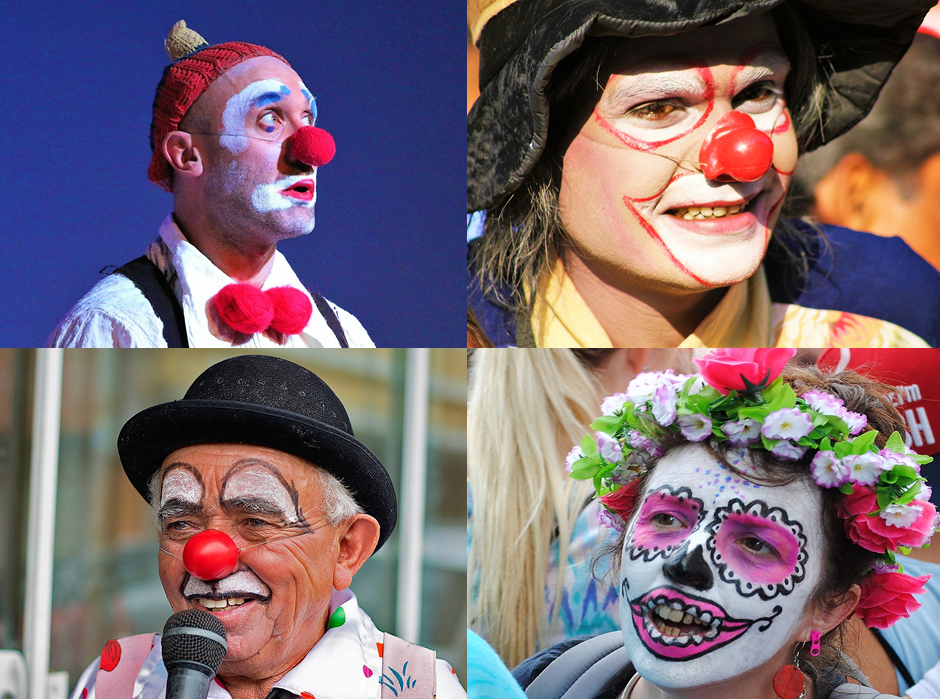
Let’s study mouth shape and eye accentuation. If you compare the clown’s faces below to the lion on their left, the effect is unmistakable. The white areas around the eyes, the black, tear-shaped marks under it (which, for the record, are there to reduce glare during daytime hunts), and the enlarged, drooping mouth are all unmistakably feline. Add a big, bushy wig, and you might as well be screaming, “I’m a lion, I’m gonna get you!”
Expression pays a big part of it, as well. Big cats have this frighteningly intense scare as they’re stalking something – like rifle sights zooming in. A clown’s makeup tends to do that for them.
The way I see it, it doesn’t even have to be scary clown makeup to awaken our instinctive fears. Let’s compare these two clowns with the tiger on the right. I think it’s safe to say that the clown in the middle has definitely watched London After Midnight or Stephen King’s movie one time too many, but even the “harmless” clown on the left still bears a marked resemblance to the tiger. Can you see it? Again, you’ve got the white around the eyes, the nose, and that big mouth that you just know is filled with huge fangs. If the clown on the left didn’t brush his teeth for a month and changed his expression to match the one in the middle, would he not be equally frightening?
Come to think of it, let’s focus on the mouth for a moment. As I mentioned, with traditional clown makeup, it’s big and surrounded by colors that tend to make it look more catlike. But what about when it’s red? Yes, the lips are typically enhanced to begin with, but what happens when the entire chin is given that reddish color? I’ll tell you. You get this effect:
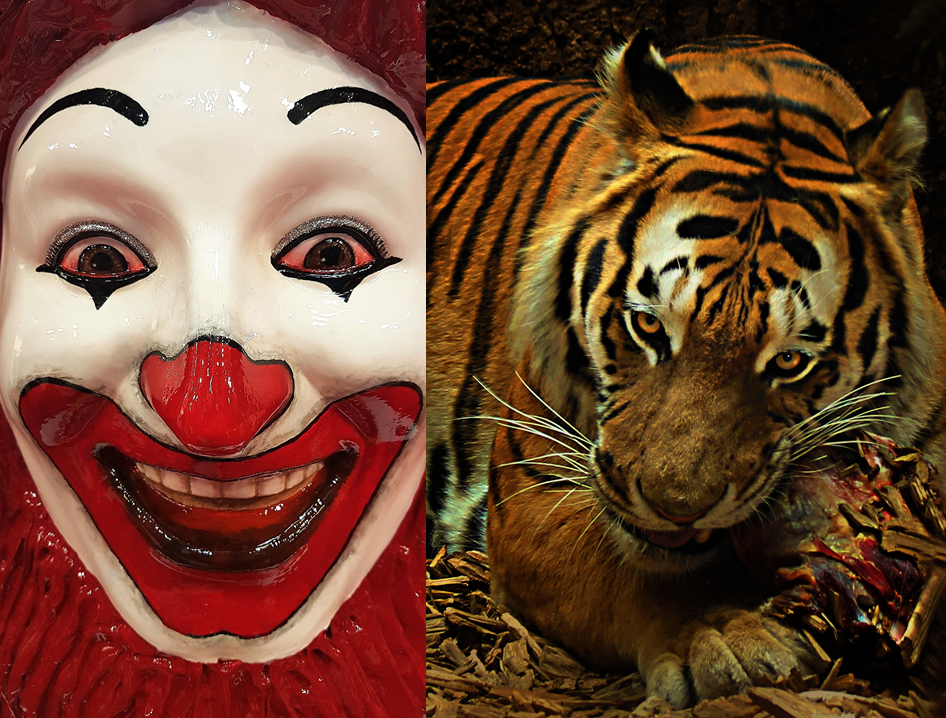
Here, you’ve got the quintessential big cat feeding. That white face, the black tear marks under the eyes, the reddish nose, the huge mouth . . . but now you’ve added a dripping, bloody maw, the kind our ancestors would’ve seen if they tried chasing a tiger or lion away from its kill (I bet that was a fun day). Or worse, tracking one down after it carried off a relative, only to come across it in the middle of its awful meal.
If you’re still not convinced, let’s examine the images below. With his red chin and black tear marks, doesn’t this scary clown remind you of the lion on the right, interrupted as it’s burying its muzzle in its victim’s intestines? Heck, even the child on the lower left, whom I’m sure we all agree, under normal circumstances, would be considered cute and harmless. Doesn’t he suddenly give off a vibe that makes us uncomfortable? Doesn’t he trigger that same instinctive warning bell we’d hear if we confronted a feeding lion or tiger, its chin dripping with blood?
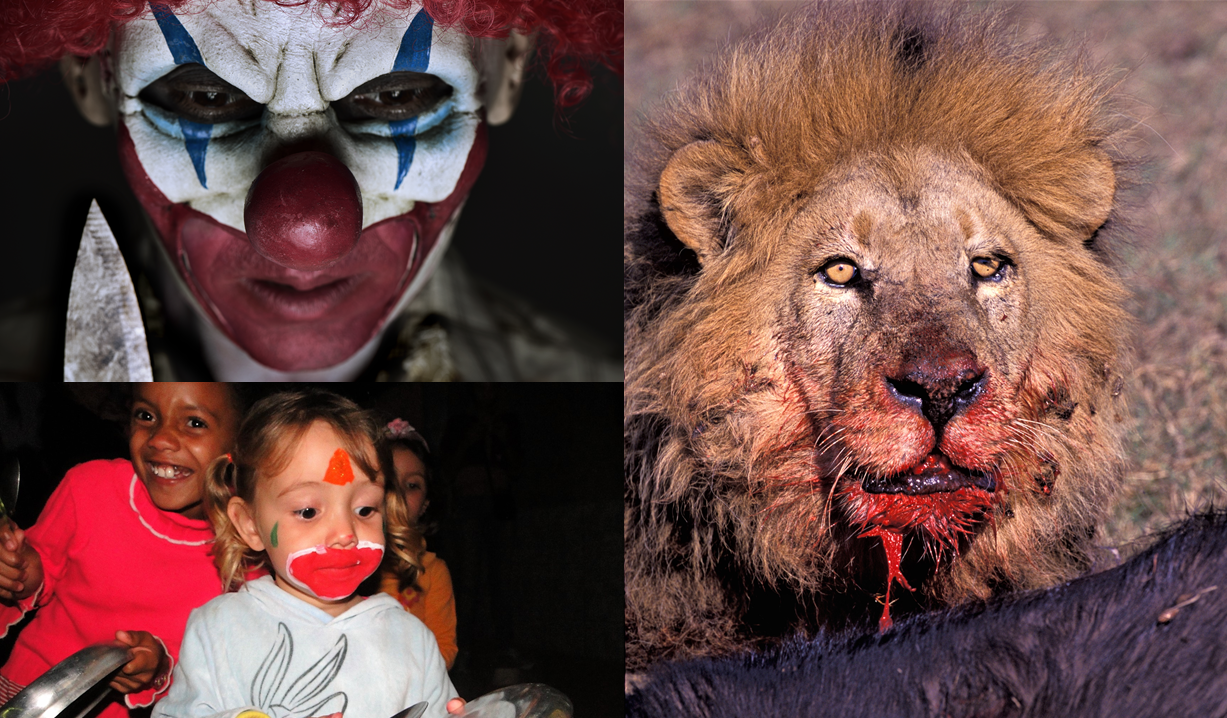
Our fear of big cats is real. And it should be. For eons, we were prey for them. Bereft of modern weapons and technology, how long would one of us last if we were jogging and ended up being charged by a Bengal tiger, or pounced on by a hungry leopard? Not long.
Sure, adding fangs, like the scary image below features, can make a regular clown’s face more terrifying. But to me, it’s just building upon a basic terror that most of us already have. I believe that the makeup clowns wear is what reawakens our primitive fear of big cats. It’s not intentional on their part (at least, for most of them). We just don’t realize the effect their makeup has on us, and that is where our fear comes from. I think that if we did realize it, then maybe, just maybe, it might help us learn to dispel it.
Of course, that’s a question better pondered by any shrinks reading this . . .
Max Hawthorne, author
#princeofpaleofiction

